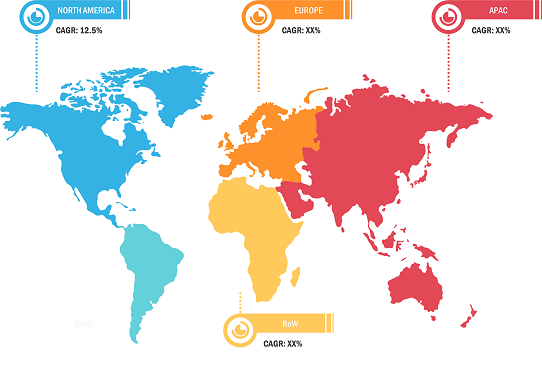Rising Number of Solar Installations Attributed to Government-led Incentives and Schemes are Driving Solar PV Inverter Market
According to our latest research study on “Solar PV Inverter Market Forecast to 2030 – COVID-19 Impact and Global Analysis – by Product Type, Connectivity, Phase, Application, Capacity and Geography,” the market is expected to grow from US$ 8,673.56 million in 2022 to US$ 17,041.24 million by 2030; it is estimated to register a CAGR of 7.8% from 2023 to 2030.
Governments worldwide are launching various schemes to encourage the use of solar power as a primary energy source which is anticipated to offer lucrative growth opportunities for the solar PV inverter market. According to a statement made by the Ministry of New and Renewable Energy (India) in January 2022, families are free to install rooftop solar panels by any vendor of their choice. A photograph of the installed system for the distribution utility is sufficient to qualify for benefits or subsidies under the government scheme. The Discom will credit the householder's account with the government subsidy, which is 40% for rooftop systems up to 3 KW in capacity and 20% for systems larger than that up to 10 KW, within 30 days of installation. According to a statement from the ministry, the decision to streamline the rooftop solar program was made at a review meeting on January 19, 2022, presided over by Union Minister of Power and New & Renewable Energy. Such government initiatives are expected to bolster the solar PV inverter market growth.

Solar PV Inverter Market Growth Report | Size & Forecast 2030
Download Free SampleSolar PV Inverter Market Size and Forecast (2020–2030), Global and Regional Share, Trend, and Growth Opportunity Analysis Report Coverage: By Product Type (String, Micro, Central), Phase (Single Phase, Three Phase), Connectivity (Standalone, On-grid), Application (Residential, Community, Commercial and Industrial, Utility), Capacity (Below 5 kW, 5 - 15 kW, 15 - 25 kW, 25 - 50 kW, Above 50 kW); and Geography
Smart inverters are a more advanced type of power electronics that can make autonomous decisions to keep the grid stable and reliable. Smart inverters work autonomously while ensuring uninterrupted power flow without voltage fluctuations. Advanced features such as voltage and frequency sensors allow smart inverters to detect grid abnormalities and send feedback to utility operators. Moreover, smart inverters allow two-way communication with utility control centers, thereby enhancing their efficiency across residential and commercial applications. All such benefits are anticipated to drive the solar PV inverter market growth.
Delta's smart solar inverter solutions enable smart and cost-effective designs for industrial and small utility-scale PV power plants by maximizing energy yields even in challenging landscapes and locations. The smart inverter has more direct current (DC) overloading options, flexible maximum power point tracking channels, fuse-less or in-line fuse options, and wireless communication systems. With the mentioned features, smart solar inverters are capable to reduce clipping loss. All such features are anticipated to drive the solar PV inverter market.
Additionally, Interstate Renewable Energy Council focuses on updating the existing technical standards and codes such as IEEE 1547 and UL 1741 to ensure optimum utilization of smart inverters owing to the constant increase in the number of DER grids in the All such benefits are anticipated to drive the solar PV inverter market. The organization focuses on promoting the integration of smart solar inverters across solar grids to increase the hosting capacity of DER, grid reliability, and consistency across deployments. All these innovative features are likely to spur the solar PV inverter market growth during the forecast period.
The North America solar PV inverter market is segmented into the US, Canada, and Mexico. With an emphasis on promoting solar power as a primary energy source, governments of North American countries have taken various initiatives to encourage the domestic use of solar power. Rooftop solar systems generate electricity that can be used in different residential, commercial, and industrial applications. Thus, the rising number of solar installations owing to government-led incentives and schemes propels the demand for solar inverters, which is expected to expand solar PV inverter market share in North America.
In the US, the US Department of Energy (DOE) set a target to cut down the cost of solar energy by 60% within the next 10 years, in addition to granting ~US$ 128 million in funding to improve performance, reduce costs, and increase the speed of deployment of solar energy technologies. This investment supports the Biden-Harris Administration's climate goals by ensuring the affordable decarbonization of the energy system, leading to a robust clean energy economy. Lowering the cost of solar energy is essential for encouraging its use, which would help the US government achieve President Biden's aim of a 100% clean electricity grid by 2035. Such government initiatives are anticipated to expand the solar PV inverter market share.
Contact Us
Phone: +1-646-491-9876
Email Id: sales@theinsightpartners.com